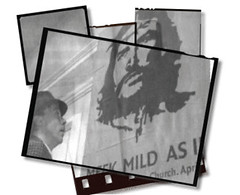The evidence for a continuing exile from 2 Baruch
 The text of 2 Baruch, written after the destruction of the Temple in 70 ce, shows evidence that the theme of exile still resonated as a useful motif. In recounting the past Baruch seems to fuse all the former exiles into one general captivity (78.4). Like other biblical books before it, the wilderness is not represented as a place of judgment alone, where God has sent his people because of their sins, but it has the added dimension of a refuge for the righteous, a place where they have a mission to perform, so that the nations too can be found worthy at the last times (1.4; 78.5-6).[1] Baruch is represented as a prophet like Moses who deliberately frames his own work within the context of Moses (82.2-7). The problem that Baruch addresses is the fall of Jerusalem, which interestingly to Baruch is an example of the corruptibility of the present world (31:4-5), and like some explanations of the first exile, its destruction was brought about by God, not the Gentiles (7:1).[2] The resounding solution to the fall of Jerusalem is that since God has not abandoned his covenant with Israel, obedience to the Law is imperative if one is to still benefit from the promises.[3] In this vein the exodus is used in the same way it is used in Isaiah 40-55; as a motif to encourage the people to direct and dispose their hearts to the ‘Mighty One’ and ‘His Law’, so that in the end they will receive everything which they had lost, and much more, ‘by many times’ (85.3-6). In the end the Messiah will summon the nations together and judge them based upon how they have treated Israel (70.1-10). [4] He will then sit down in peace forever on the throne of his kingdom in Edenic conditions in an incorruptible Zion and in an incorruptible land.[5]
The text of 2 Baruch, written after the destruction of the Temple in 70 ce, shows evidence that the theme of exile still resonated as a useful motif. In recounting the past Baruch seems to fuse all the former exiles into one general captivity (78.4). Like other biblical books before it, the wilderness is not represented as a place of judgment alone, where God has sent his people because of their sins, but it has the added dimension of a refuge for the righteous, a place where they have a mission to perform, so that the nations too can be found worthy at the last times (1.4; 78.5-6).[1] Baruch is represented as a prophet like Moses who deliberately frames his own work within the context of Moses (82.2-7). The problem that Baruch addresses is the fall of Jerusalem, which interestingly to Baruch is an example of the corruptibility of the present world (31:4-5), and like some explanations of the first exile, its destruction was brought about by God, not the Gentiles (7:1).[2] The resounding solution to the fall of Jerusalem is that since God has not abandoned his covenant with Israel, obedience to the Law is imperative if one is to still benefit from the promises.[3] In this vein the exodus is used in the same way it is used in Isaiah 40-55; as a motif to encourage the people to direct and dispose their hearts to the ‘Mighty One’ and ‘His Law’, so that in the end they will receive everything which they had lost, and much more, ‘by many times’ (85.3-6). In the end the Messiah will summon the nations together and judge them based upon how they have treated Israel (70.1-10). [4] He will then sit down in peace forever on the throne of his kingdom in Edenic conditions in an incorruptible Zion and in an incorruptible land.[5]
As one might expect in 2 Baruch the exile was a powerful motif that very well might be used to explain the destruction of the Temple, and thus the re-interpretation of the exile motif itself into a more positive experience was key to 2 Baruch’s (re)use of the exodus material. Instead of a place of judgment, the wilderness, became an opportune place for grieving and atoning, a place that provided a sanctuary for the righteous, a place to wait until their journey was completed by yhwh’s coming restoration (85.10-12).
[1] Vanderkam, "Exile in Jewish Apocalyptic Literature," 105.cf. Hos 3.5, Jer 29.7
[2] David E. Aune, "From the Idealized Past to the Imaginary Future: Eschatological Restoration in Jewish Apocalyptic Literature," in Restoration: Old Testament, Jewish, and Christian Perspectives, ed. James M. Scott (JSJSup 72; Leiden: Brill, 2001), 167.
[3] Richard Bauckham, "Apocalypses," in Justification and Variegated Nomism: A Fresh Appraisal of Paul and Second Temple Judaism, ed. D. A. Carson, Peter Thomas O'Brien, and Mark A. Seifrid (Grand Rapids: Baker Academic, 2001), 175-6.
[4] Aune, "From the Idealized Past," 158.
[5] Despite the probability that this refers to a heavenly Zion, where the faithful will be received, it nevertheless still shows the power of the exile motif, even if the return is not to the literal land, but the heavenly land. Cf. Aune, "From the Idealized Past," 173.




No comments:
Post a Comment